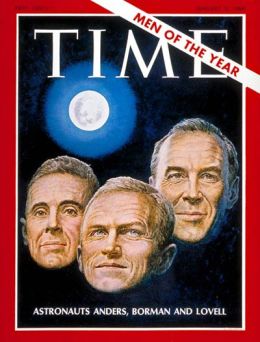
Only the second manned American space mission — and the first one to leave low-Earth orbit and fly by the far side of the Moon — Apollo 8 was a dramatic success, a sign of the rapidly-improving prowess of the newborn American space program. It was a much-lauded achievement on December 27, 1968 — and just in time to put the mission’s three astronauts on the cover of TIME’s Man of the Year issue. It was also unmistakably the biggest feel-good story of a tumultuous year, which saw the assassinations of both Dr. Martin Luther King, Jr. and Robert F. Kennedy. TIME’s cover story took pains to note the contributions of the thousands of NASA staffers and civilians involved in the mission’s success, but kept the highest honor for the three pioneering astronauts.
In the end, though, it was three lonely men who risked their lives and made the voyage. And in the course of that first soaring escape from the planet that was no longer the world, it was the courage, grace and cool proficiency of Colonel Frank Borman, Captain James Lovell and Major William Anders that transfixed their fellowmen and inscribed on the history books names to be remembered along with those of Marco Polo and Amundsen, Captain Cook and Colonel Lindbergh. In 147 hours that stretched like a lifetime, America’s moon pioneers became the indisputable Men of the Year.





